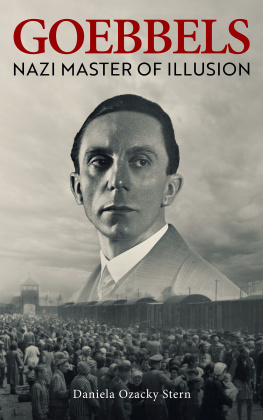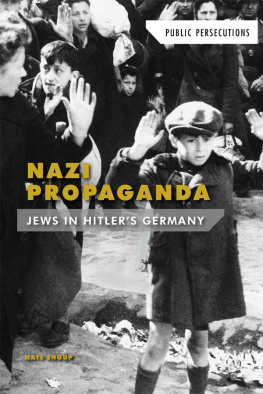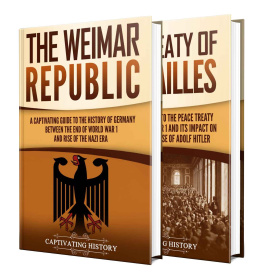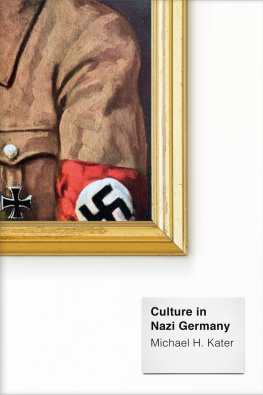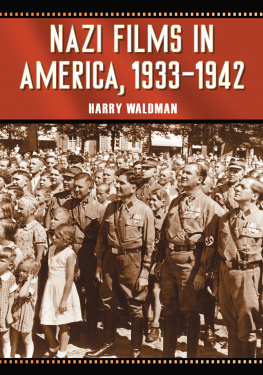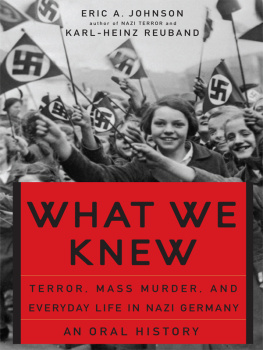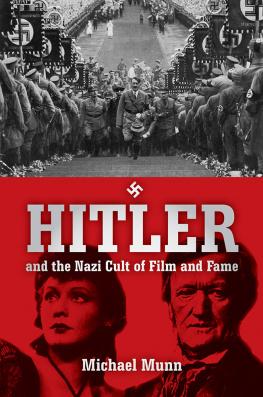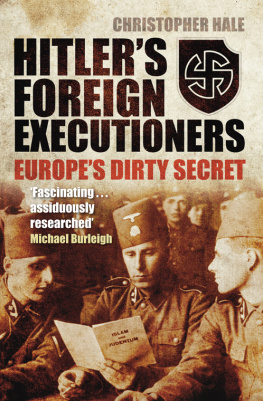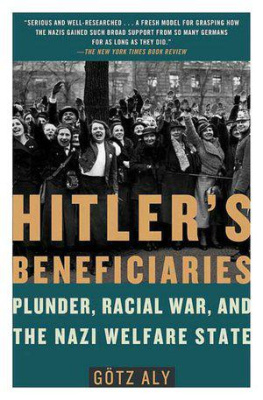Hitlers Theater
Art as Propaganda
Bruce Zortman
Hitlers Theater: Art as Propaganda , second edition
Copyright 2012
All rights reserved Bruce Zortman
No part of this book may be reproduced or transmitted in any form or by any means, graphic, electronic, or mechanical, including photocopying, recording, taping, or by any information storage retrieval system, without the permission, in writing, from the publisher.
Cover photo: The Theater for Ten ThousandJoseph Goebbels at the consecration of the Brandberge Thingplatz at Halle a. S.
ISBN: 978-0-9859820-0-3
Emet Publications
225 C Avenida Majorca
Laguna Woods, CA 92637-4136
Produced in the United States of America
This edition, similar to the first in content but dissimilar in political emphasis, is dedicated to my sons, Jacob Benjamin and William Alexander, with the sincere hope that they will never experience the agony of a Nazi Germany.
Preface to the Second Edition
While studying the modern German theater at the Free University in Berlin, my attention was continually drawn to the period of the Third Reich. In addition to the blackened hulks of concrete and brick that dominated the greater part of the downtown area there were the plays by Bertolt Brecht being produced at the Berliner Ensembles Theater am Schiffbauerdamm. The Private Life of the Master Race and The Resistible Rise of Arturo Ui both presented a vivid account of what occurred during the Nazi regime and in particular what happened to the German arts.
By implication, Brecht stood as a symbol of what the Third Reich had done to art when it forced into exile such gifted artists as he was. On the other hand, the city of Berlin itself was separate, divided, but especially in consideration of the arts, it was sterile, unable to revive that grand spirit of the Weimar Republic. It was then that I first envisioned a study of the theater during the Third Reich. Not that I wanted to follow a negative, unproductive period of the arts or add to the spate of material condemning the Nazis, but rather to investigate how art can exist in such a political climate.
My original idea was to study all theater in this chaotic period. In so doing, I stumbled across vague and incomplete references to the nurturing and development of a cult theater that occurred soon after Hitlers seizure of power. Further investigation revealed that a hypertrophied amphitheater construction program was immediately instituted during which forty massive structures with seating capacities upward of 20,000 were built across Germany. Photographs of the performances disclosed maximum attendance including thousands of performers. By quick calculation, I reckoned that at least 14 million spectators per year witnessed these ideological performances known as the Thingspiel. I was hooked on the subject matter and doubly gratified, for it appeared that the research would be fresh, especially fascinating and unique, dramatically reflecting the aberrant and eccentric political structure of National Socialism.
It was both surprising and fortuitous that I was able to carry out my basic research in the United States. Many documents had been lost, the object of errant missiles or a willful destruction to avoid association with a failed enterprise and regime, so the shelter of our large public and university libraries provided a boon to my research. In the case of missing plays, I was able to locate their controversial criticism from the writings of either the playwrights or the critics, which proved an adequate substitute. Other omissions were not serious and when the research was complete and comparisons made, I found that the coverage was repetitious. Moreover, it was evident that several articles were republished in different periodicals after they had undergone a title or identification change.
I have updated sources to include references that have been published since the printing of the first edition. By their scarcity it is apparent that fresh investi gations have not been vigorously pursued. Additionally, after being convinced that the original subtitle, The Theater of Ideology in Nazi Germany, was not only pedantic but also in tenor misleading, for it projected a certain dignity to that short, degenerative and self-serving period of theater history.
I am grateful to the staff at the Theater Institute, University of Cologne, for directing me to many new references. I extend my thanks to the Reference Department, Hoover Memorial Library, Stanford University, for allowing me to use the special collections located there. The Photographic Service, New York Public Library, was an invaluable source of material, especially for periodical literature as was the Library of Congress, where I spent many a day in the Thomas Jefferson Reading Room. My gratitude extends to Dagmar Becker for her suggestions regarding the German idiom, Anne Clark, instructor at the Laguna Woods Village Macintosh Club, for her expertise in preparing a digital manuscript and the Reference Staff, Graduate Research Library, UCLA, for procuring vast amounts of documentation used in my project through their excellently managed interlibrary loan service.
Nevertheless, this study and the first edition would not have appeared without the generous encouragement from my mentor, Professor William Melnitz, Dean of the College of Fine Arts, UCLA, who recommended that I receive a Taussig Fellowship that allowed me to study modern German theater at the Free University of Berlin for one year and an NDEA Fellowship to pursue my PhD.
Then several years later, three singular events pushed me over the edge to prepare a second edition: the publication of Clemson Universitys Professor Susan Duffys most authoritative book review of the first edition, a recent visit to the U.S. Holocaust Memorial Museum and the acuity of my wife Sabra
All indelibly punctuate that we are the remembering people.
BZ
Table of Contents
Introduction: Seizure of the Arts
Nazi Kunstpolitik
Notes
Chapter One: Origins of a Cult Theater
Heroic Spectacles in the Open Air
Unity of Player and Audience
Ideology for the Arts
V lkisch Theater in the Open Air
Notes
Chapter Two: A Reactionary Theater
The Beginning
Enter the Chorus
Goebbels Regulates the Art of the Theater
Atavistic Search for a New Religion
Cry for Ideological Creativity
The New Dramaturgy
Job at Armageddon
Notes
Chapter Three: Hypertrophied Expansion
The 1934 Season
German Passion of 1933
Search for a New T heater Architecture
Goebbels Refurbishes the Volksbhne
Prohibitions Overwhelm the Sanctions
Notes
Chapter Four: Peak and Finish
The 1935 and 1936 Seasons
20,000-seat Theater on the Neckar
Reversion to an Old Tradition
Search for a New Thrust
National Socialism Celebrates its Third Successful Year
Hitlers Game of Justice
Another Change of Policy
Notes
Chapter Five: In Retrospect
Purity Versus the Arts
Headlong Rush to War
Sources: Plays, Books, Journals, Newspapers
Photographs:
The Pantheon of Work and rear view of the playing areas of the Brandberge Thingplatz at Halle a. S.
The playing areas and auditorium of the Brandberge Thingplatz at Halle a. S.
Consecration of the Thingplatz at Nuberg near Braunschweig followed by a performance of Wolfram Brockmeiers Ewiges Volk ( Eternal People ).
The playing areas and the 20,000-seat auditorium of the Thingplatz on the Heilige Berg near Heidelberg.
The playing areas and the 20,000-seat auditorium of the Dietrich-Eckart-Bhne in Berlin.
Performance of Vom Tauwind und der neuen Freude ( Political Relief and the New Joy ) at the Dietrich-Eckart-Bhne in Berlin.


